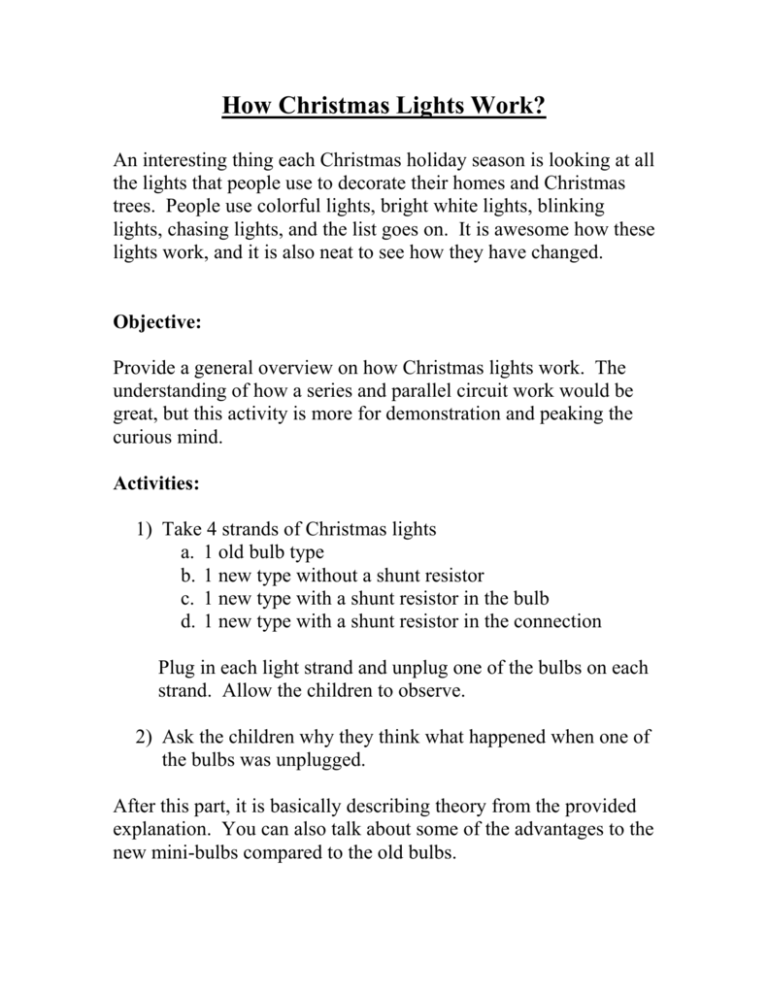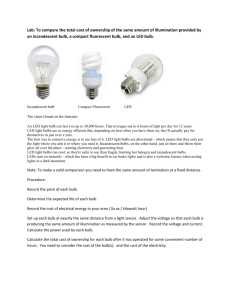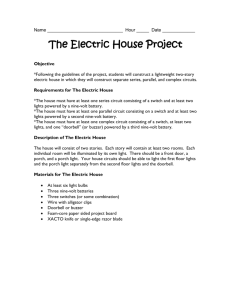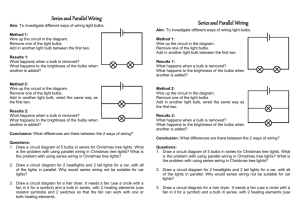How Christmas Lights Work
advertisement

How Christmas Lights Work? An interesting thing each Christmas holiday season is looking at all the lights that people use to decorate their homes and Christmas trees. People use colorful lights, bright white lights, blinking lights, chasing lights, and the list goes on. It is awesome how these lights work, and it is also neat to see how they have changed. Objective: Provide a general overview on how Christmas lights work. The understanding of how a series and parallel circuit work would be great, but this activity is more for demonstration and peaking the curious mind. Activities: 1) Take 4 strands of Christmas lights a. 1 old bulb type b. 1 new type without a shunt resistor c. 1 new type with a shunt resistor in the bulb d. 1 new type with a shunt resistor in the connection Plug in each light strand and unplug one of the bulbs on each strand. Allow the children to observe. 2) Ask the children why they think what happened when one of the bulbs was unplugged. After this part, it is basically describing theory from the provided explanation. You can also talk about some of the advantages to the new mini-bulbs compared to the old bulbs. Explanation: It might not be possible to come across all of these different types of lights. Some might not be made anymore because of the newer means of connecting the lights together. You might explain what would have happened in each case and why? a. If you unplug one of the old bulbs from the set, they all keep working. During the time when these were made, they used bulbs much like those in night lights (5 to 10 watt bulb). These strands were connected in parallel meaning what happens to one bulb does not affect the rest. A demonstration can be done with holding hands in the form of a parallel circuit. If one of the kids between the poles lets go, the kids around them will still be getting power. In the diagram below, the kids would go in the place of the 50 bulbs. b. The new type of lights would all go out a few years ago if one of the bulbs burned out or got loose. Some of these sets might still be made, but all mini-light sets are made keeping the bulbs connected in series. This allows what happens to one bulb affect the others. A series demonstration can be done by holding hands in one straight line and making one person break the link. When the link is broke, all the lights would go out. c. In this type of setup, the lights would stay on only if the bulb were to burn out. The bulb being taken out of the socket would break the series connection. If the bulb just burns out, a shunt resistor is used to direct electricity through to the next bulb without breaking the series circuit. If the bulb is taken completely out of the socket, the shunt resistor in the bulb does no good and all the lights go out. d. In this type of set up, the lights are supposed to never go out under any type of problem. This type of setup uses two shunt resistors with one in the bulb and one in the connection area. If the bulb burns out, the shunt resistor in the bulb keeps electricity flowing to the rest of the bulbs. If you take the bulb completely out, the shunt resistor in the socket keeps electricity flowing to the rest of the bulbs. The question of why bulbs flash may be asked. Two methods are used to create this blinking or flashing. One works off hot and cold temperature effects. As things get hot, they expand and bend while materials that get cold shrink and are less bendable or brittle (break easily). In a strand of lights, a special bulb known as a blink bulb is used. The blinker bulb has a special wire or filament that breaks a connection to the lights when hot and allows it to connect again when it cools. This pattern of hot and cold allows the light strand to blink. A more sophisticated way of doing this is with controllers placed on the end of each strip. It uses other ways of causing the lights to blink, chase, or dim, but it uses the same principles.









